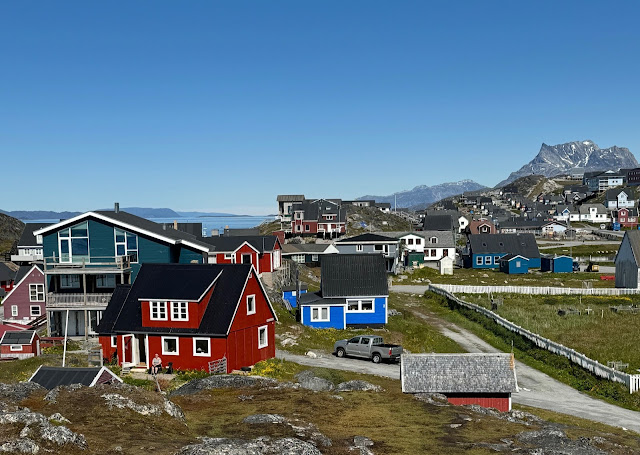Running Blind was a 1979 BBC miniseries based on the espionage thriller by Desmond Bagley.
It involves a double cross, a knife with a ruby pommel and handle decorated in Nordic patterns, a mystery high powered rifle, and an epic four-wheel drive chase through Iceland’s rugged volcanic landscape, geysers, hot springs, glaciers, rivers and rugged capes. Barren but beautiful. I’ve wanted to visit ever since.
I don’t recommend Desmond Bagley’s book the way some people recommend Ludlum with a promise that the writing is superior to Clancy etc or Clancy with a promise that the writing is superior to Ludlum etc. It’s very dated and Peter Fitzsimmonsesque in the main character’s first person, overly self-reverential, narrative.
The TV adaptation can be found on YouTube and is worth a look for a laugh.
First impressions entering Reykjavik’s outer suburbs from the airport were a bit challenging, then. It looked disturbingly like a small Wollongong or a big Ulladulla with what looked like Kikuyu lawns laced with dandelions and white clover, windswept shrubs and conifers not dissimilar to Norfolk pines.
The centre of Reykjavik is a different matter. Great bars and restaurants. I must agree with the claim by a tiny weatherboard building in the port to World’s Best Lobster Soup.
The Laugevegur Trail is a magical 4 day hiking experience. At 55km it isn’t horribly onerous. The landscapes change every day.
There are about 50 words for snow in Icelandic. Apparently, there are more in the Inuit languages in Greenland and Alaska.
It’s hard to take a bad photo in Iceland. Definitely one of the most astonishing places I’ve ever been.
Where I slept: Reykyavik Marina - Berjaya Iceland Hotels: Great location, neat and tidy.
Where I ate: Seabaron: A credible claim to world's best lobster soup.
Guides: Norse Adventures: We were well fed and well led by a slightly crazed, incredibly funny and knowledgeable son of vikings.








